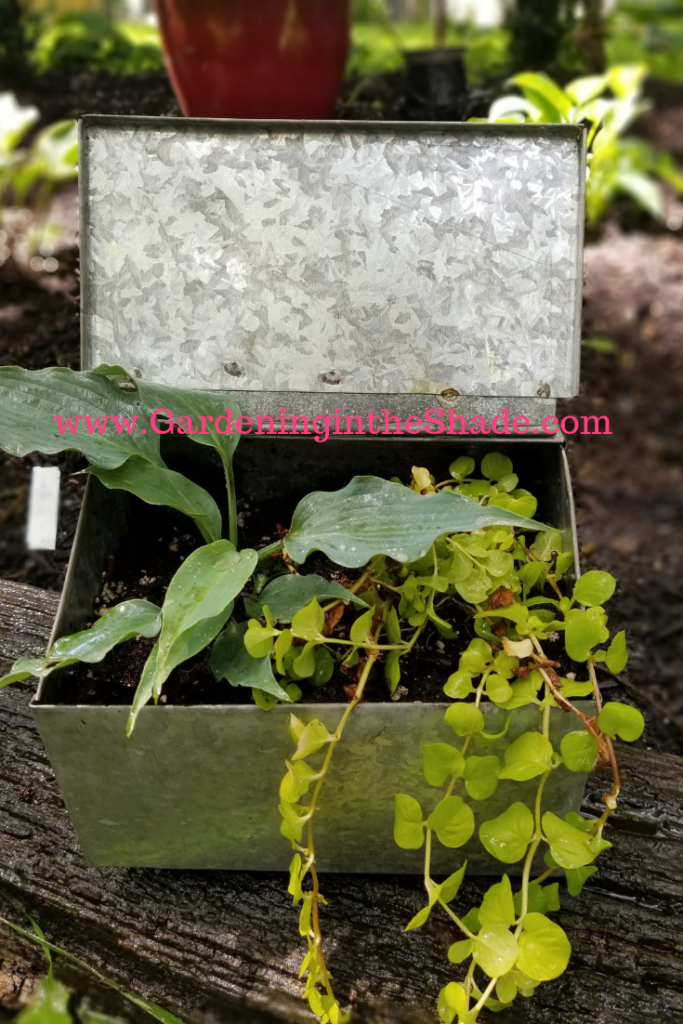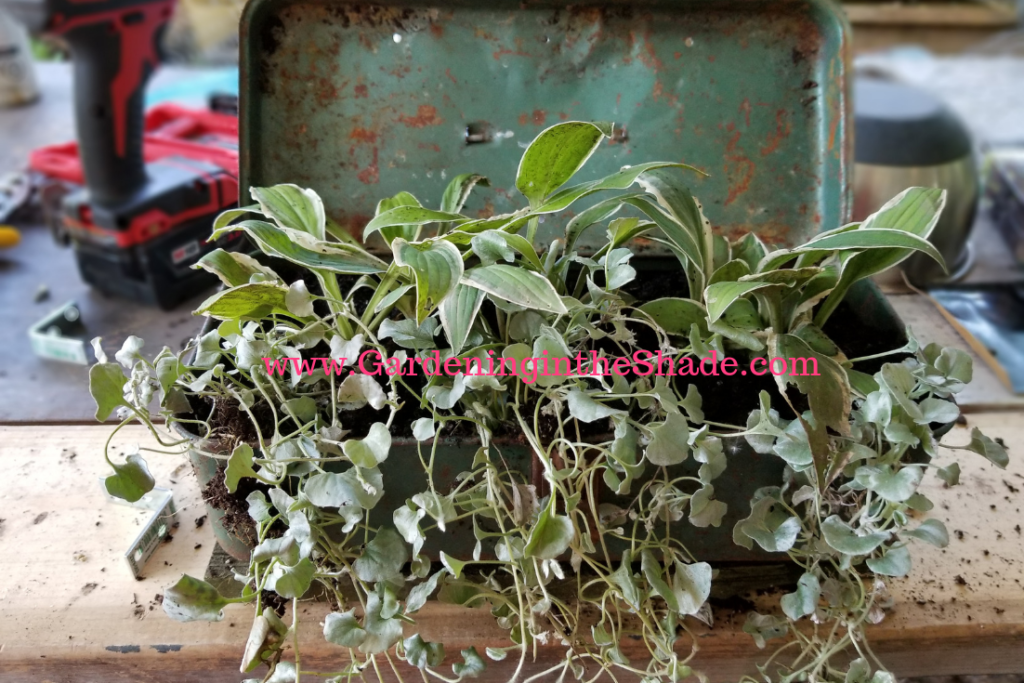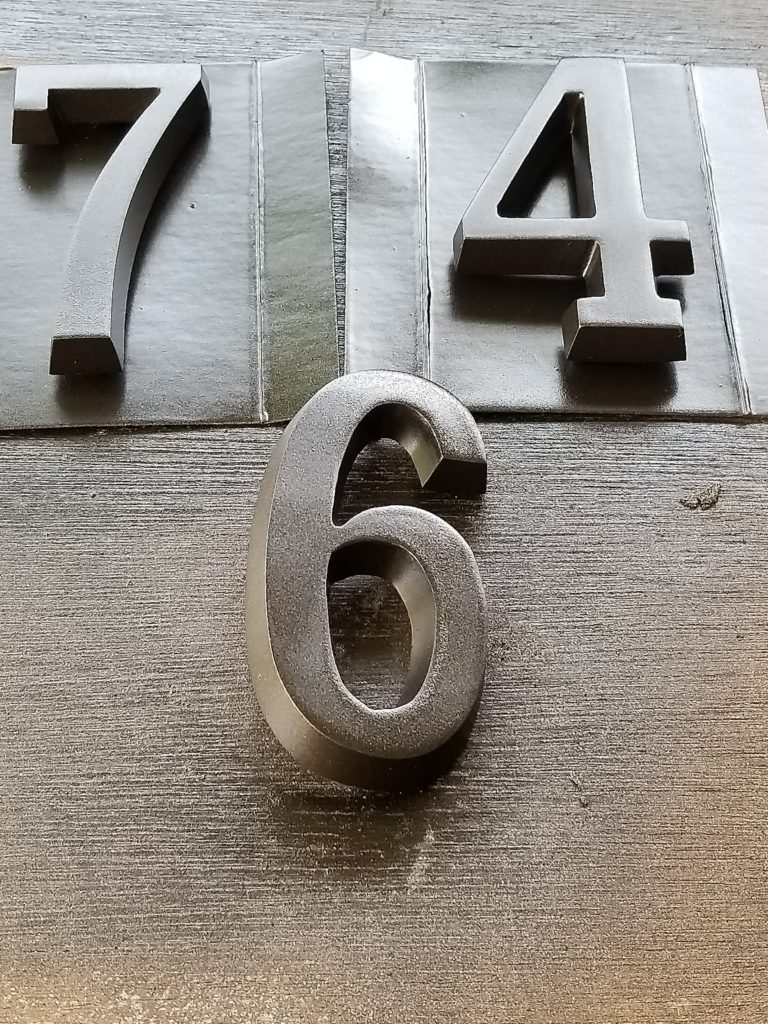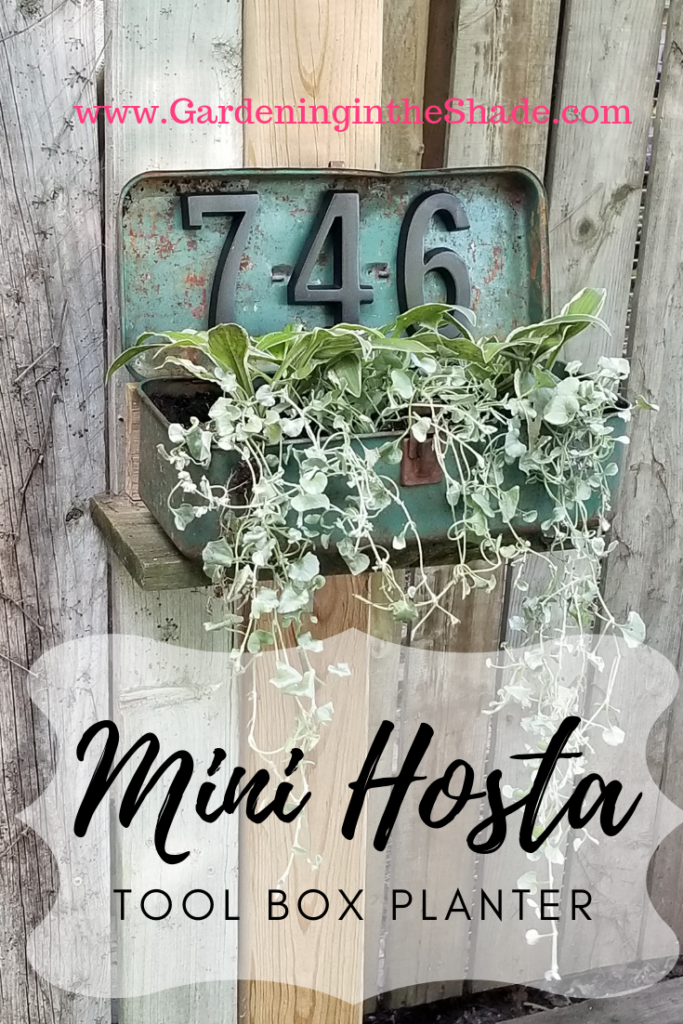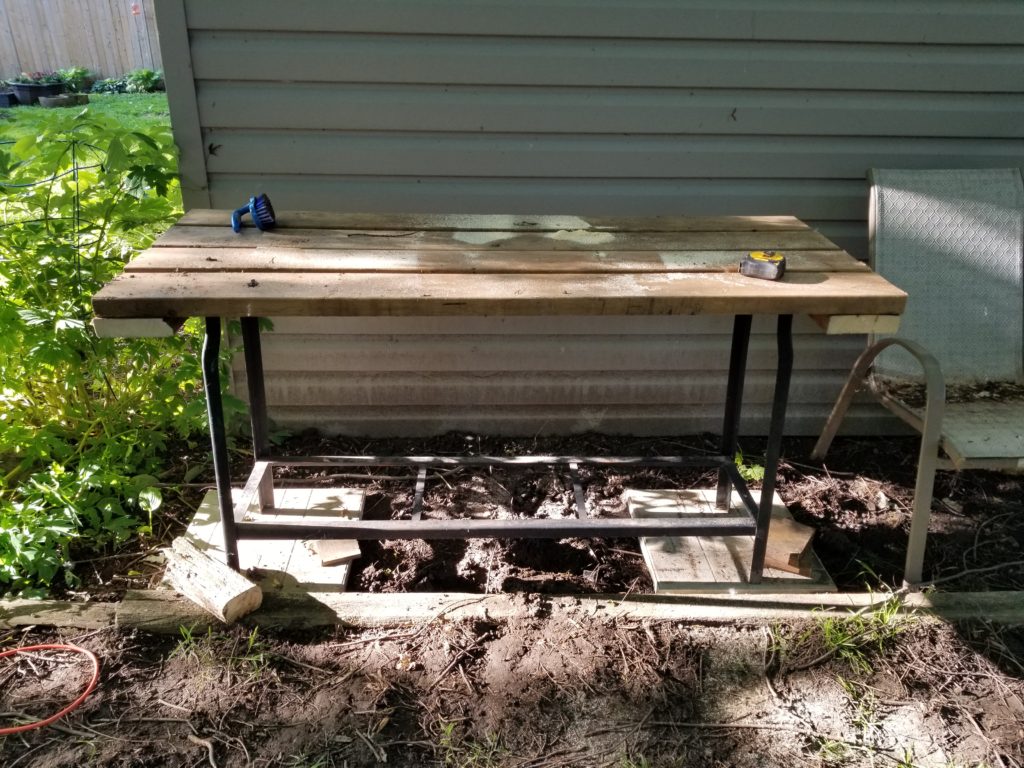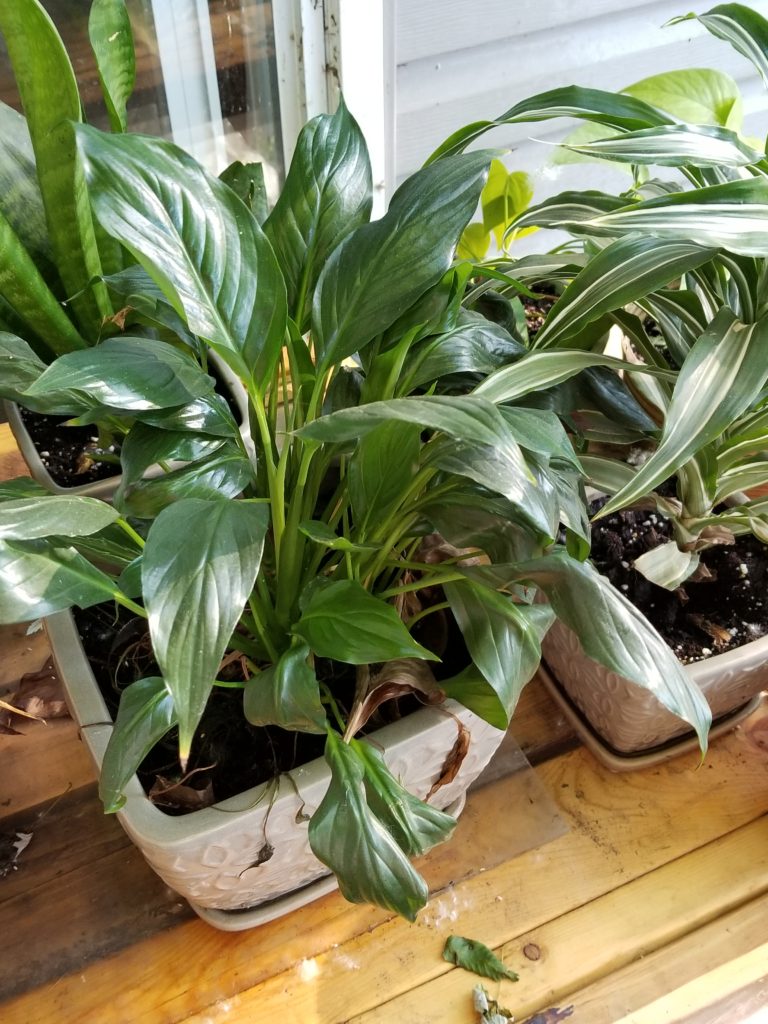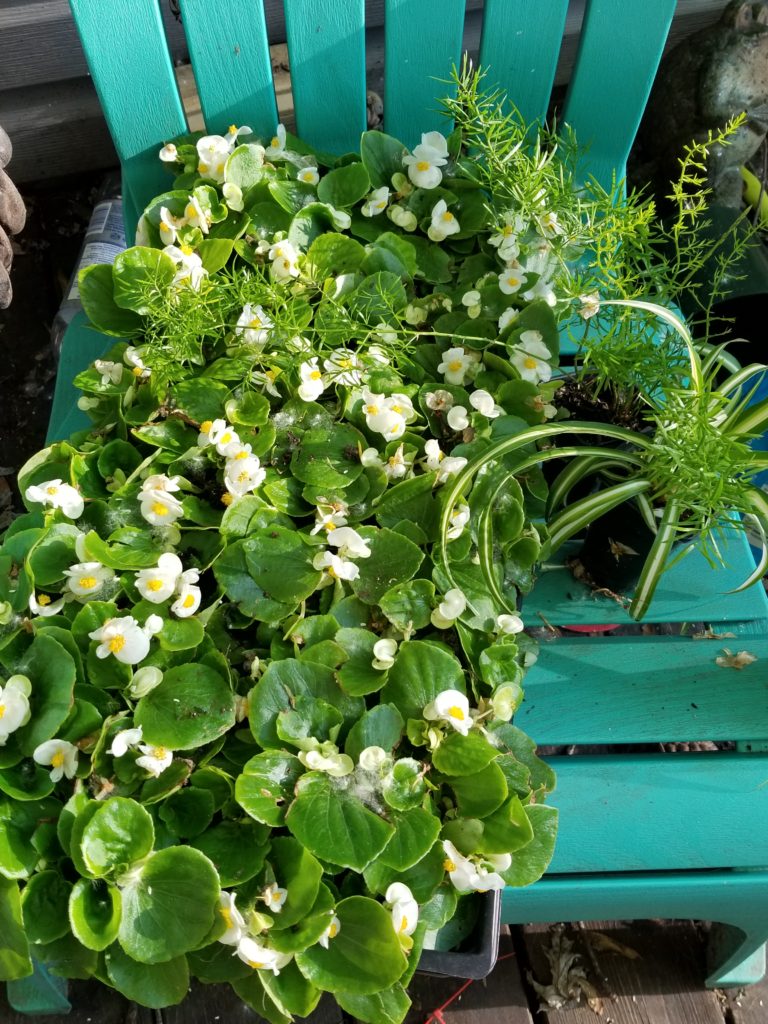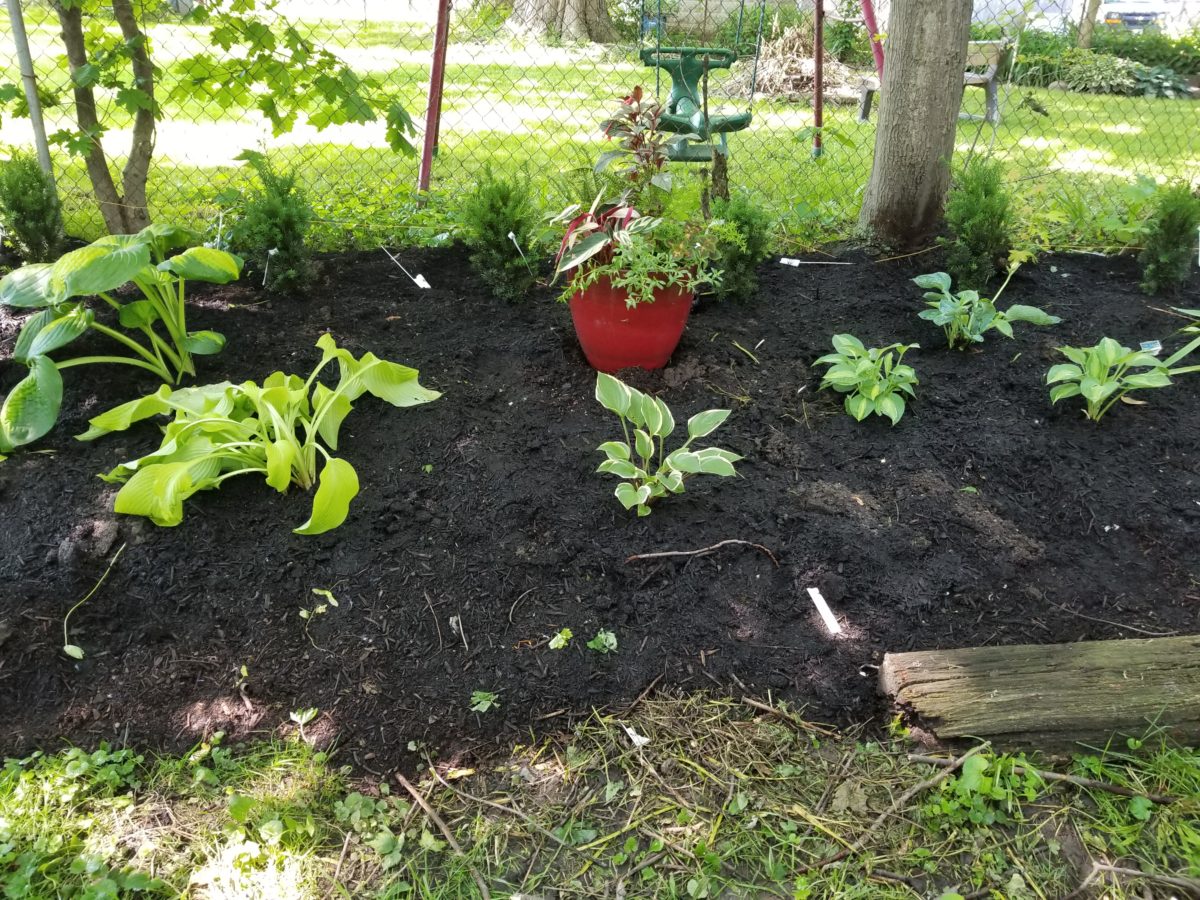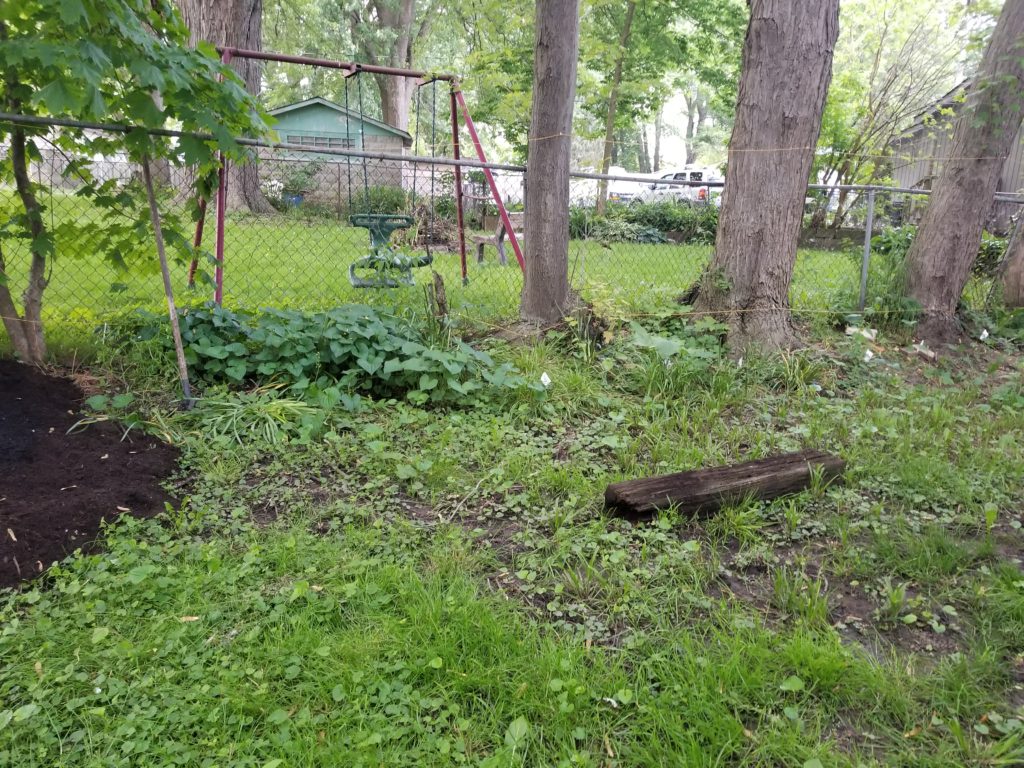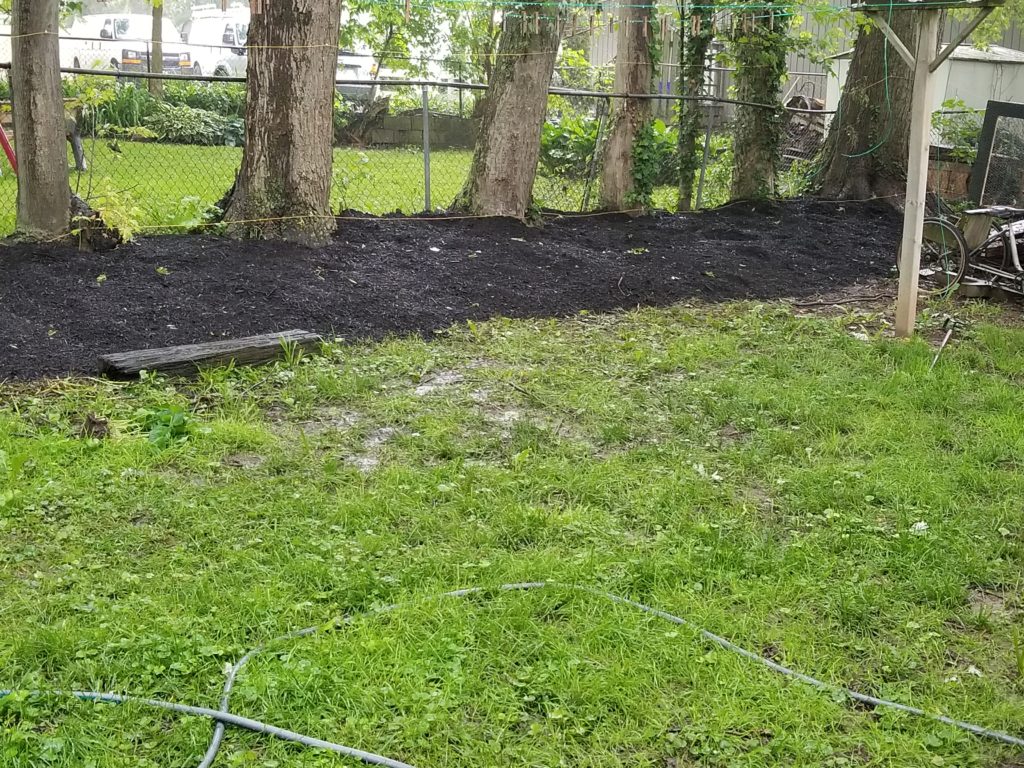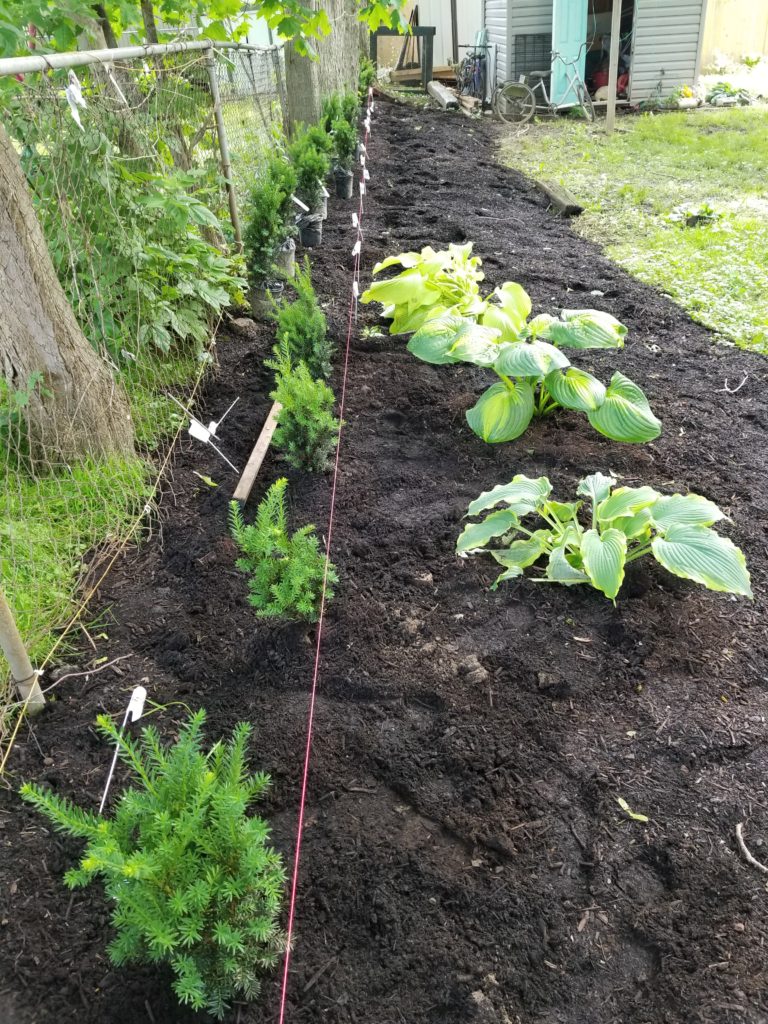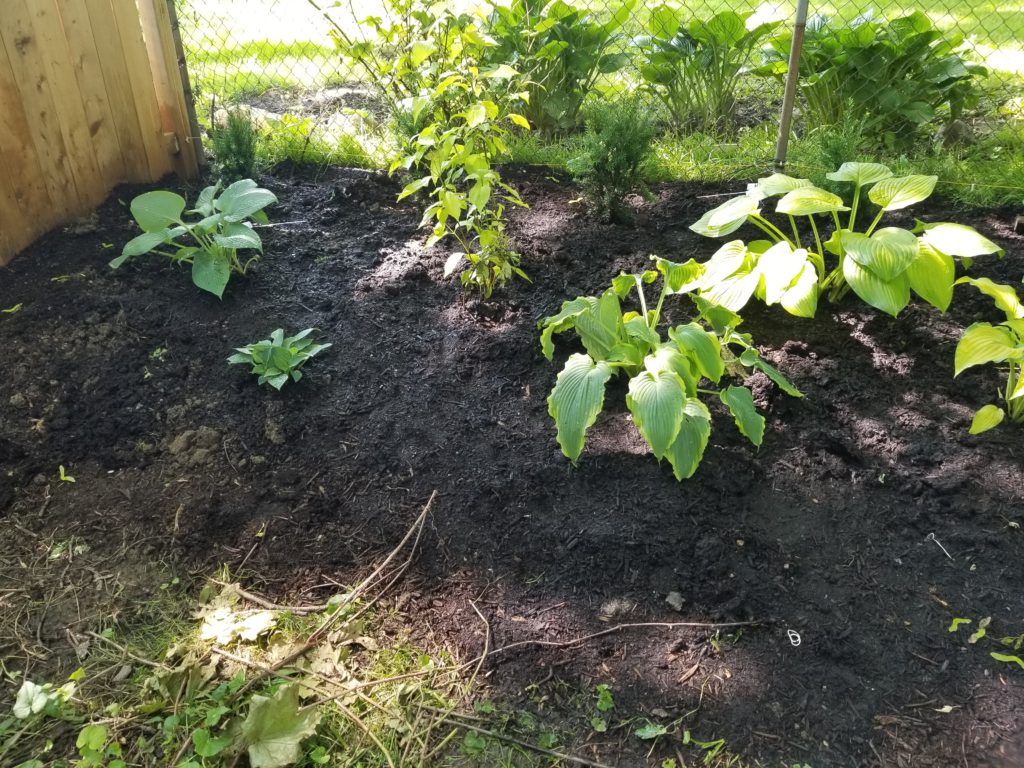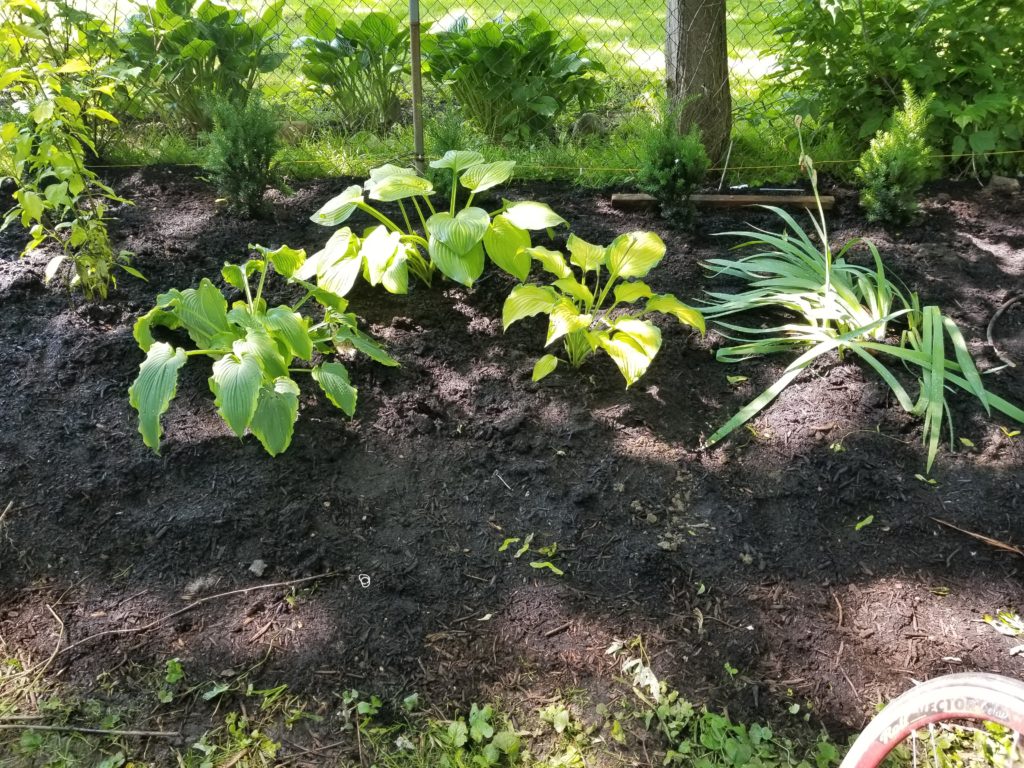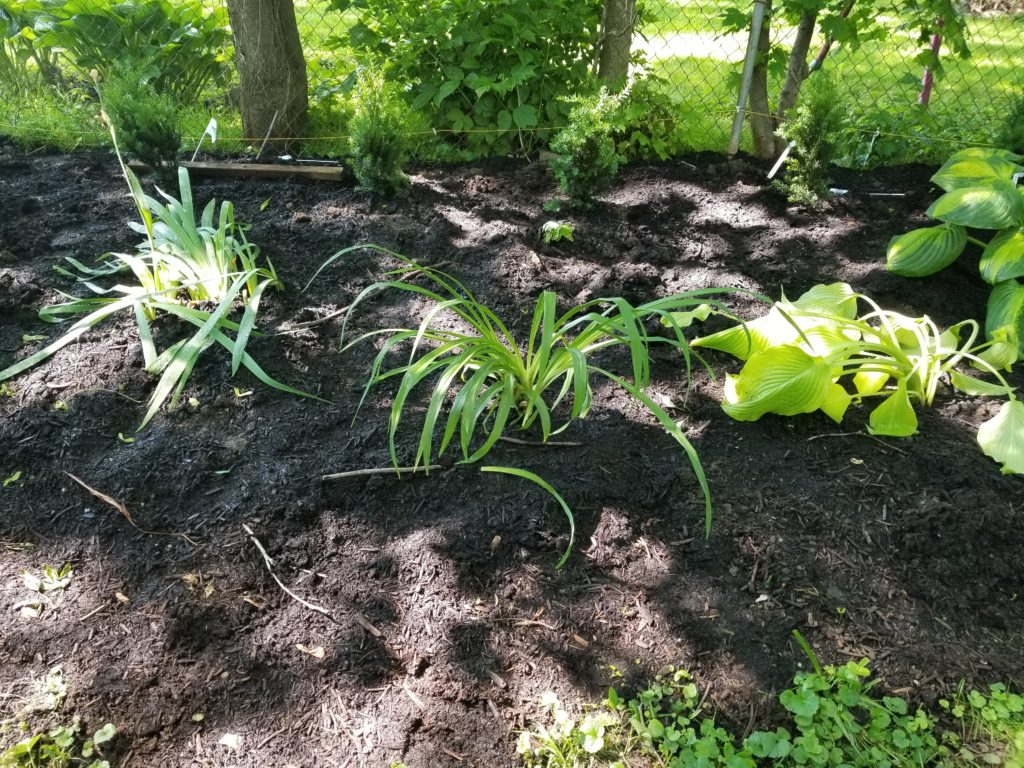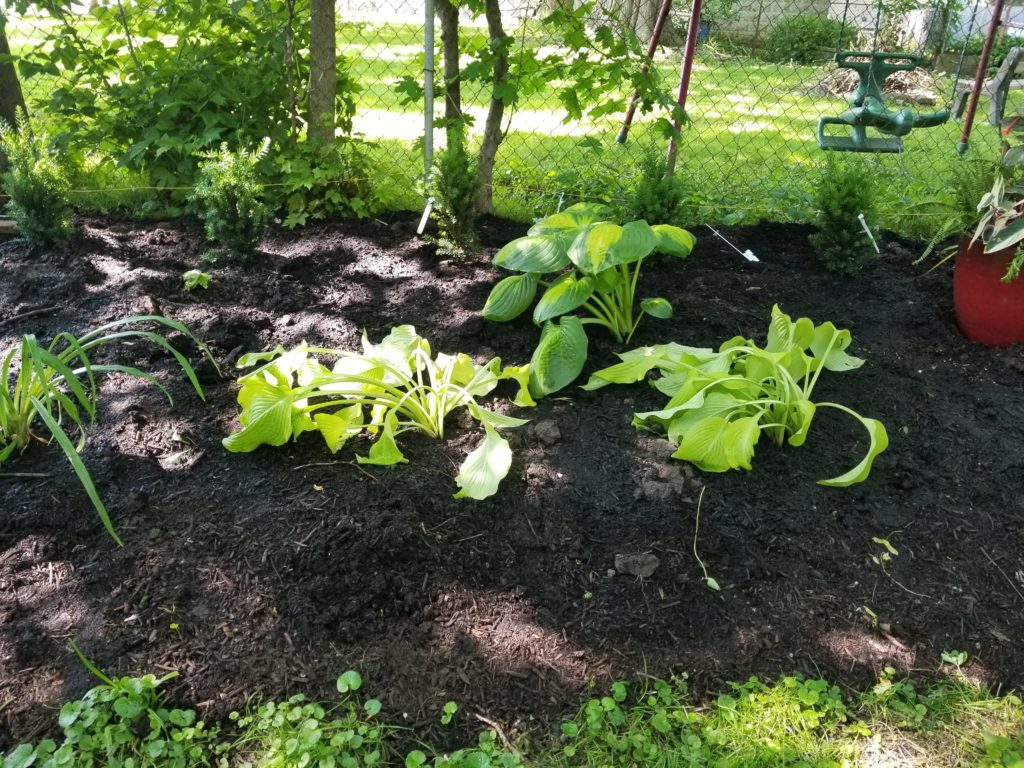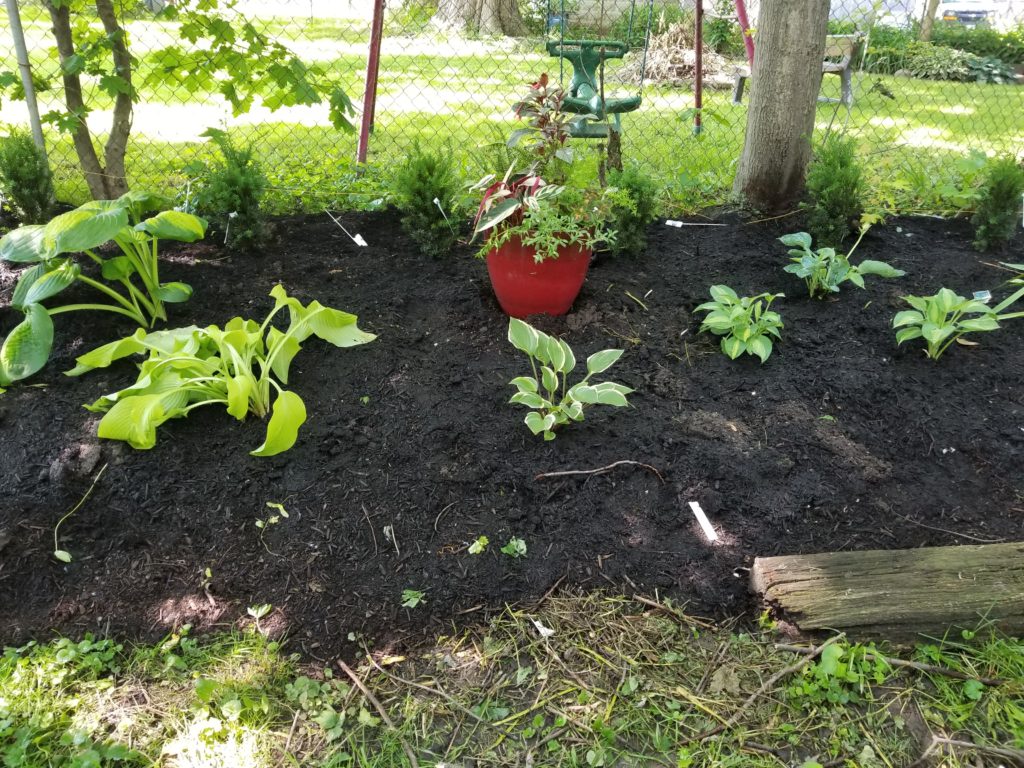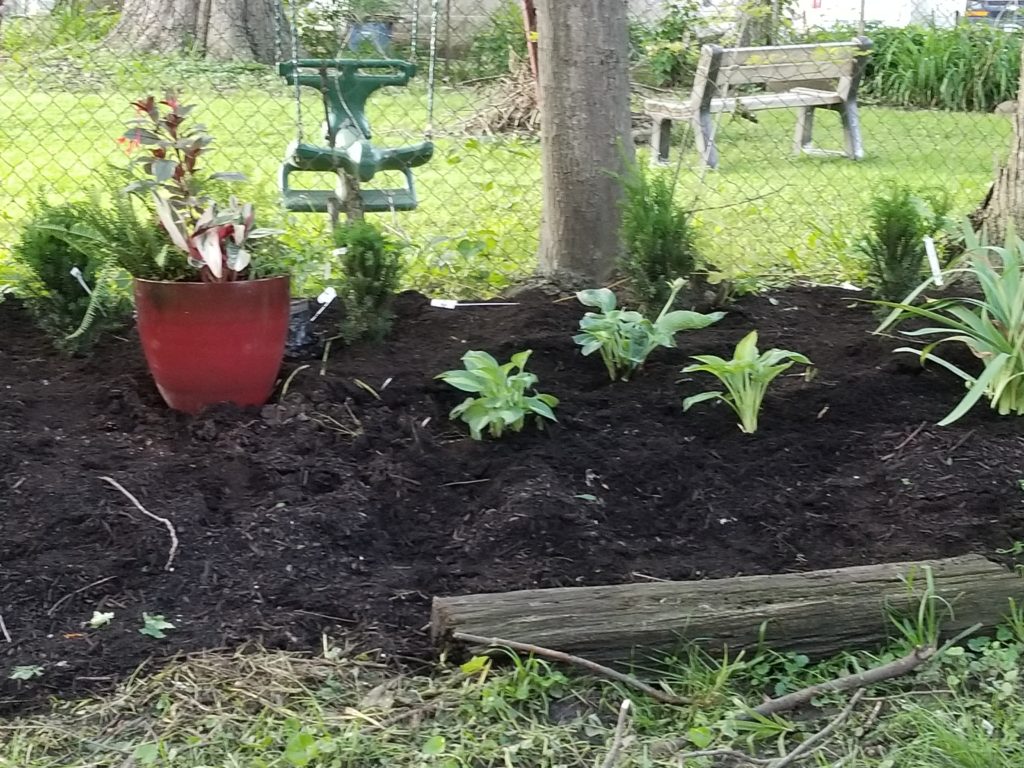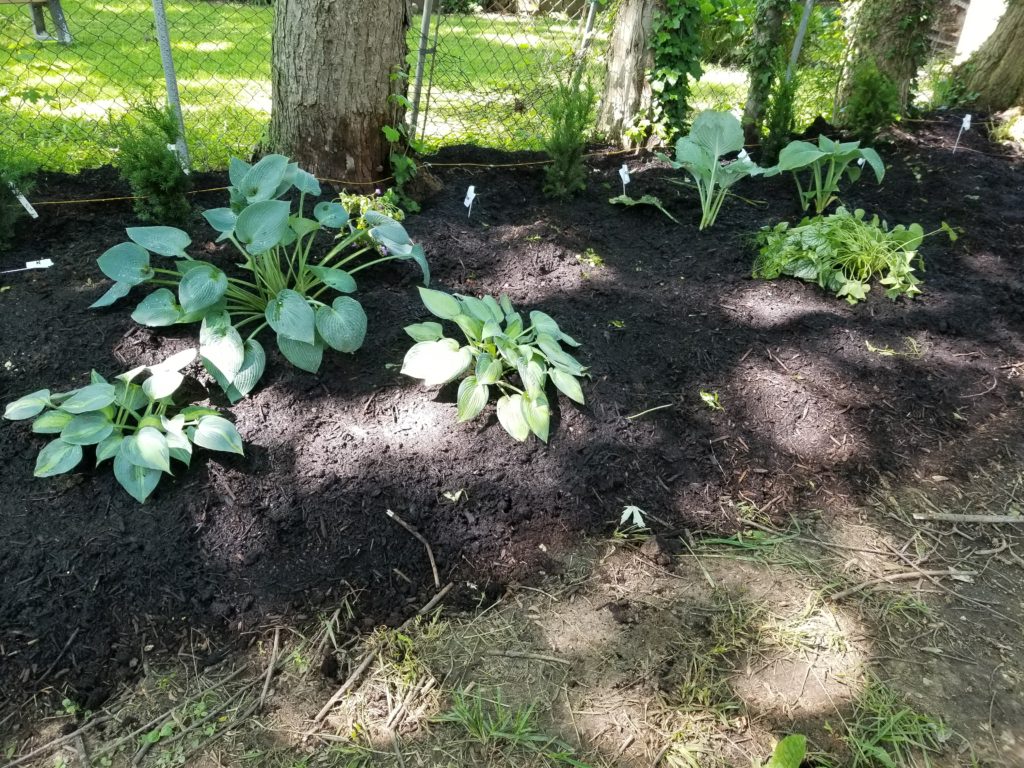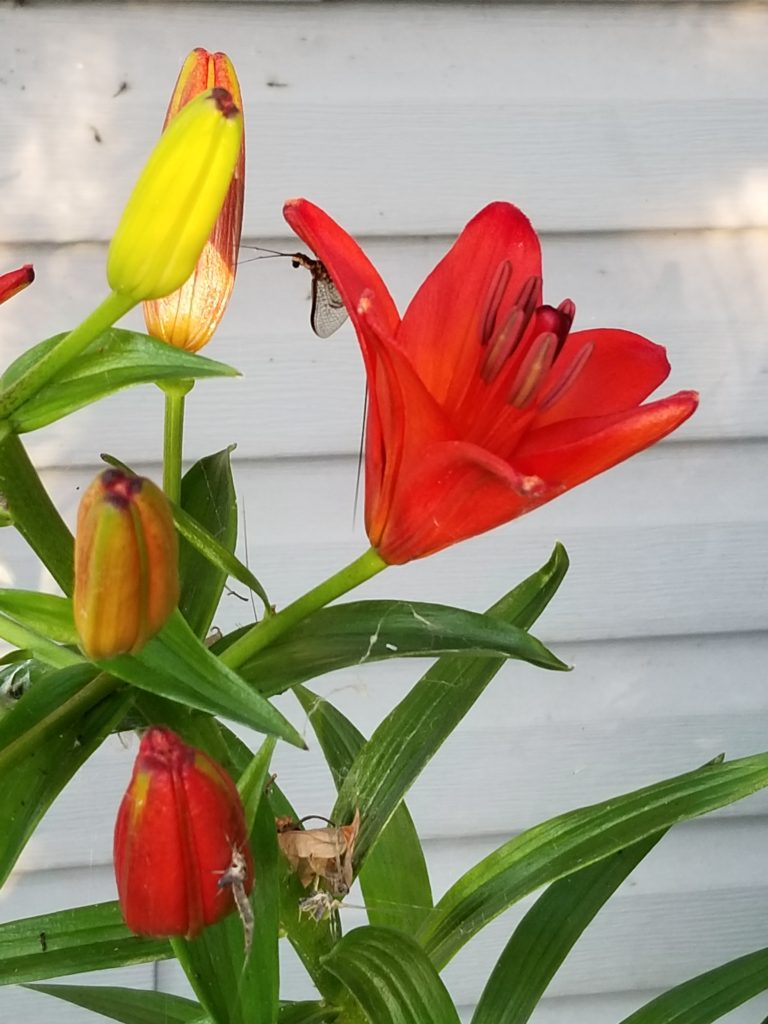 The fourth plague has arrived, my windows are covered in may flies, or fish flies or whatever you call them where you’re at. You can see one of them hanging out on this Lily. I’m fortunate to not live near any street lights which usually have piles of them underneath. Storefronts and gas stations, any place that has to have overnight lighting will all reek of them for the next couple of weeks.
The fourth plague has arrived, my windows are covered in may flies, or fish flies or whatever you call them where you’re at. You can see one of them hanging out on this Lily. I’m fortunate to not live near any street lights which usually have piles of them underneath. Storefronts and gas stations, any place that has to have overnight lighting will all reek of them for the next couple of weeks.
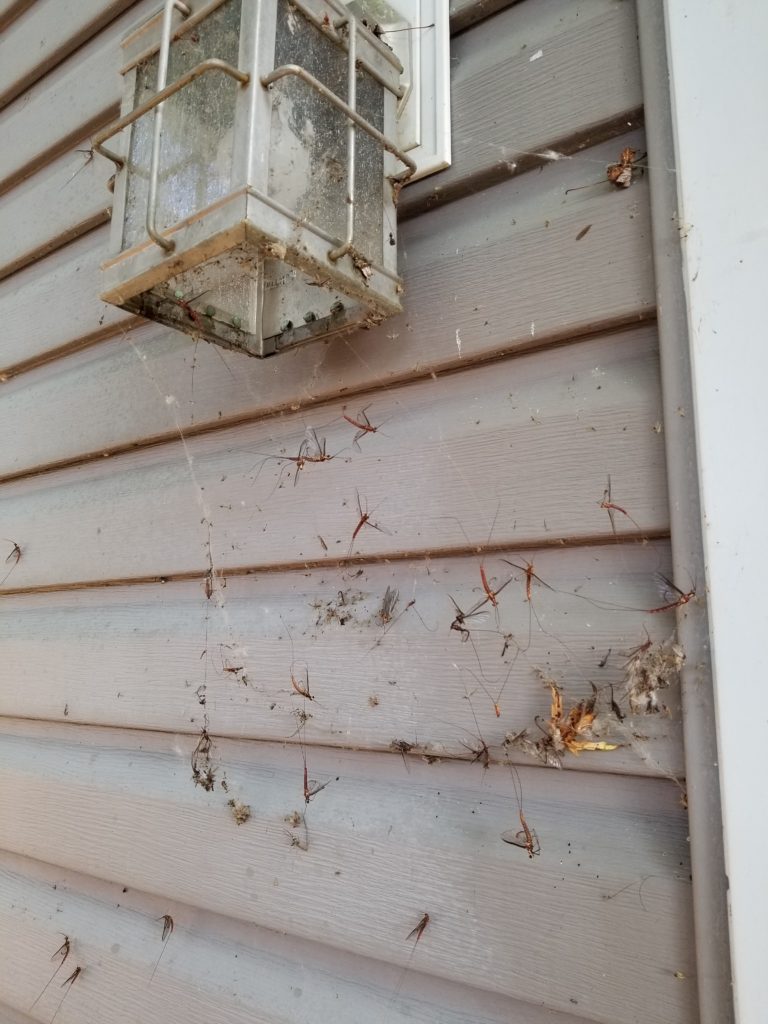 For me, it means I will get to wash my siding in a week or two. Blech!
For me, it means I will get to wash my siding in a week or two. Blech!
Almost finished planting
My hands are in such rough shape from gardening that I can’t unlock my phone with the fingerprint reader, but I only have a half a flat of pink begonia to plant and some other odds and ends. Mainly petunia which are a hard thing in my yard because petunia like the sun and the best I have to offer is part-sun. I need to turf the snapdragons so maybe I’ll plant the petunia in their place. This was my first year with snapdragons, I would definitely plant again for early season color. They lasted longer than the pansies, just now crapping out from the heat.
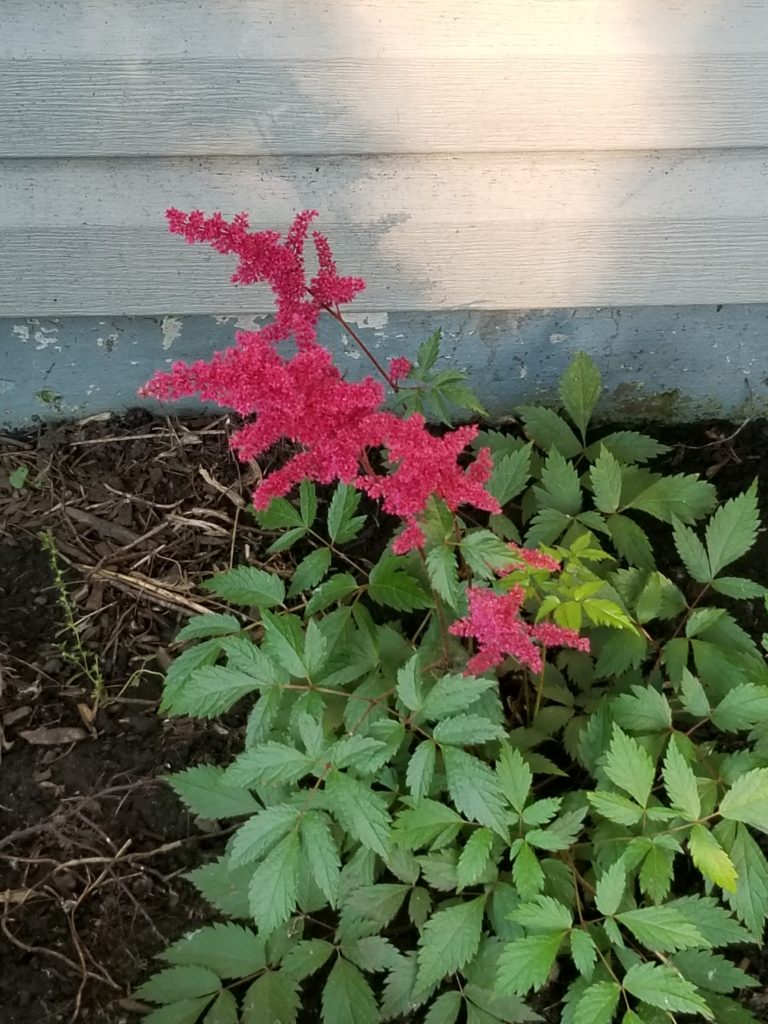
Astilbe is blooming – a plant worth keeping in mind for shade.
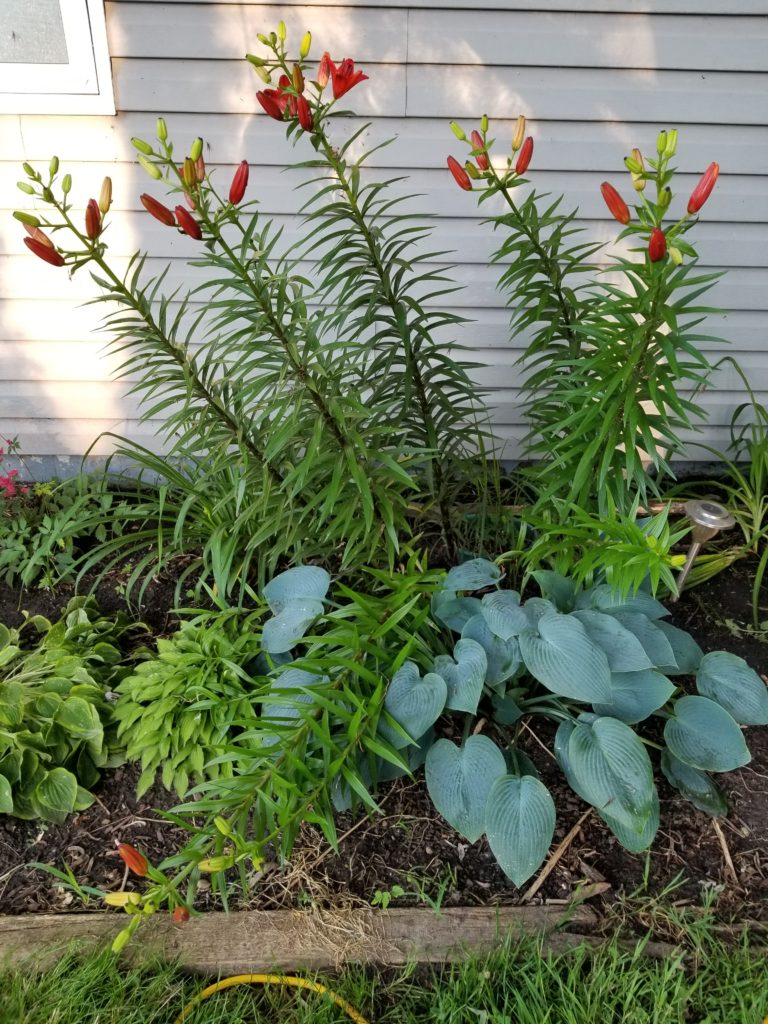 The lilies are flowering. They really don’t suit this spot all tall and gangly, but the flowers are pretty and there’s nowhere better to move them to so they get to stay.
The lilies are flowering. They really don’t suit this spot all tall and gangly, but the flowers are pretty and there’s nowhere better to move them to so they get to stay.
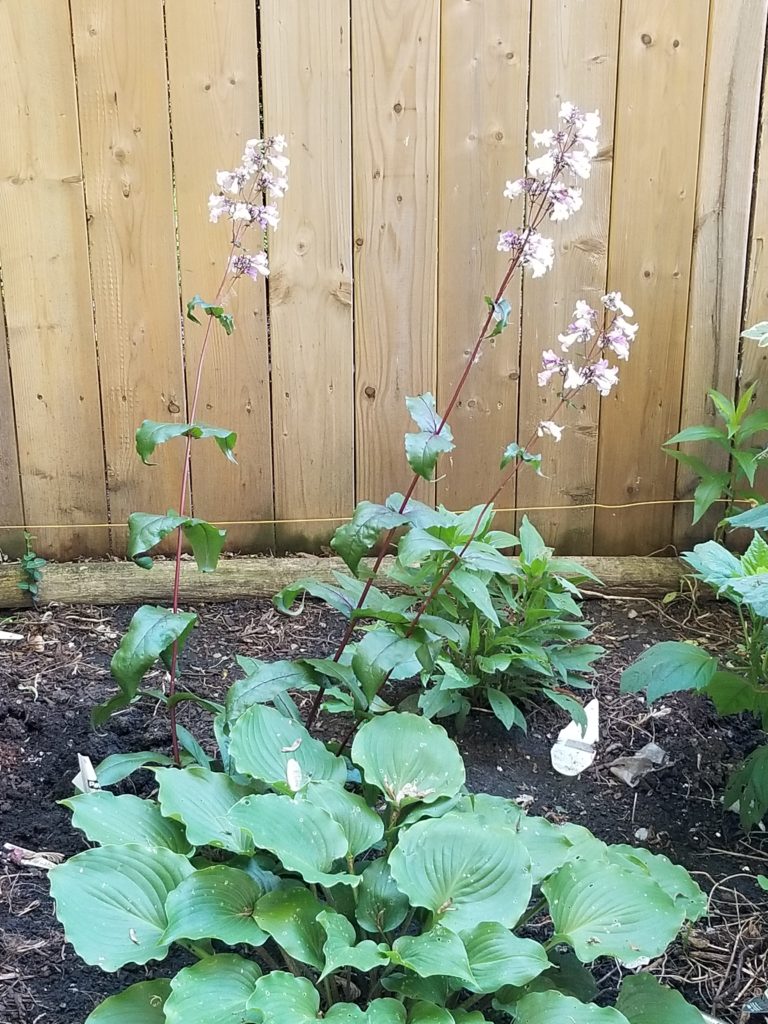 This penstemon made it through the winter and flowered. Another plant that really doesn’t fit it’s spot. I’m almost afraid to move it – when you’re skating on the edge of a plant’s requirements already moving it is risky. The hosta in front is ‘Grand Slam’. It’s the latest blooming hosta I own and a favorite. Plain Jane green leaves with a ruffled edge, but it has a really tidy habit and the leaves are thick.
This penstemon made it through the winter and flowered. Another plant that really doesn’t fit it’s spot. I’m almost afraid to move it – when you’re skating on the edge of a plant’s requirements already moving it is risky. The hosta in front is ‘Grand Slam’. It’s the latest blooming hosta I own and a favorite. Plain Jane green leaves with a ruffled edge, but it has a really tidy habit and the leaves are thick.
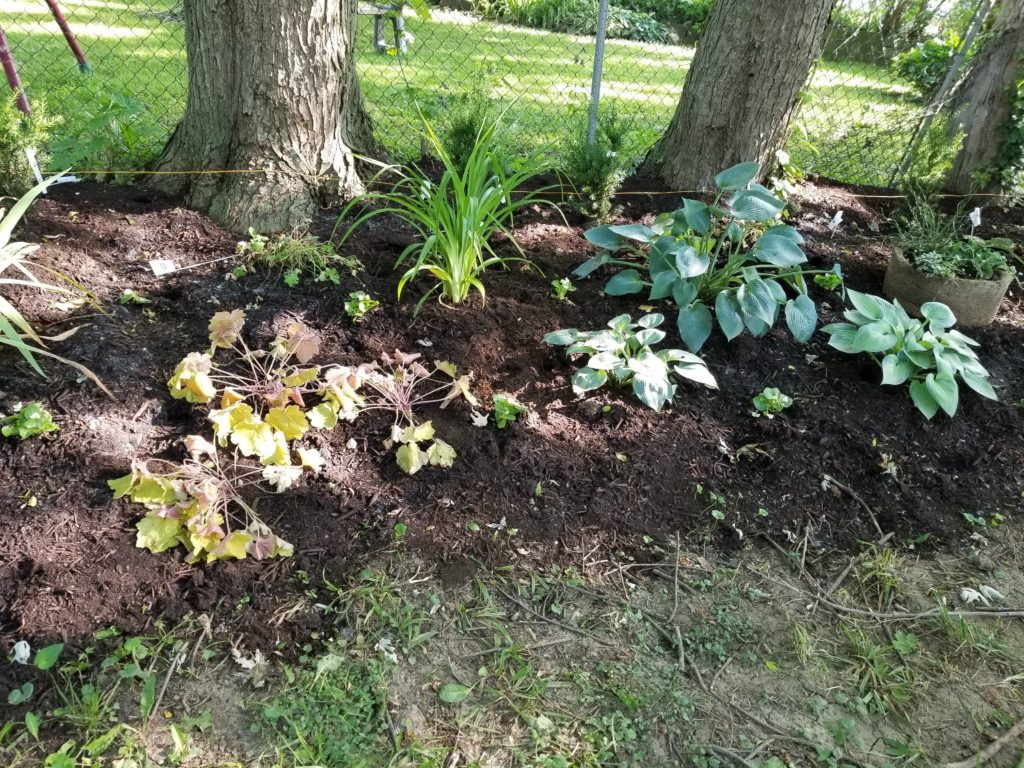 The back garden is coming along nicely. I added a Day Lily – White Temptation. It’s a re-bloomer so we’ll see what the flowers look like. I moved some Heuchera into this bed, the Japanese maple was burying them where they were. I’ve also planted a flat of white begonia throughout. Once it establishes I’ll post an update.
The back garden is coming along nicely. I added a Day Lily – White Temptation. It’s a re-bloomer so we’ll see what the flowers look like. I moved some Heuchera into this bed, the Japanese maple was burying them where they were. I’ve also planted a flat of white begonia throughout. Once it establishes I’ll post an update.
The Hummingbird Garden
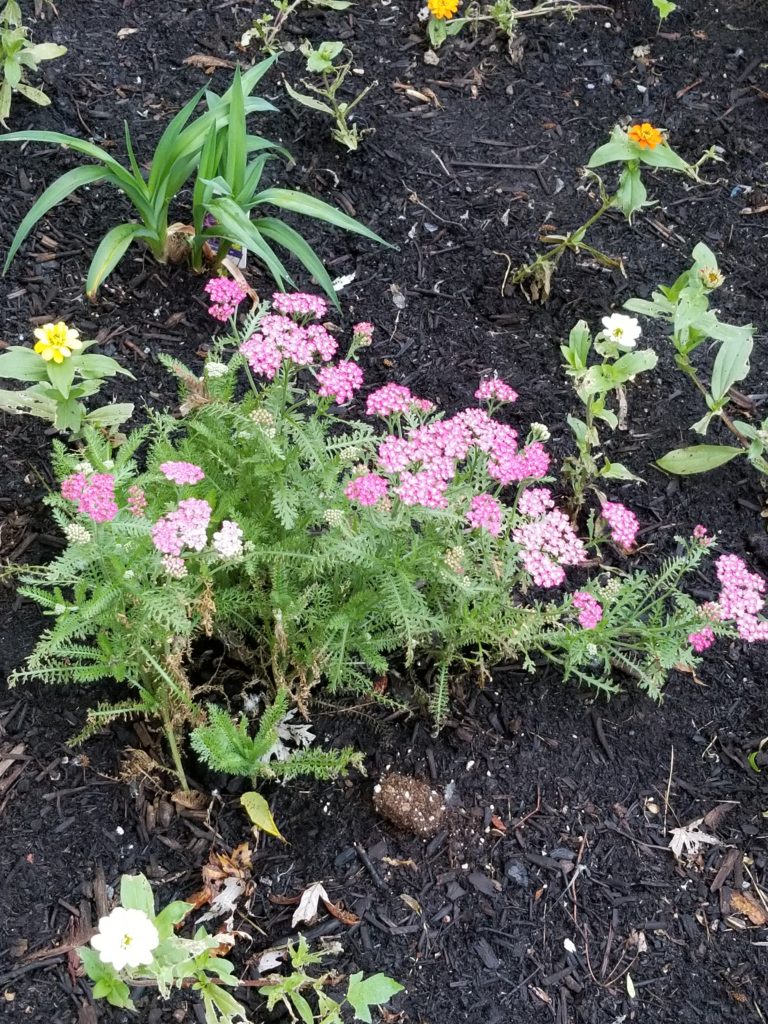
Achillea is flowering as well. I am calling this the ‘Hummingbird Garden’ because it is planted with them in mind.
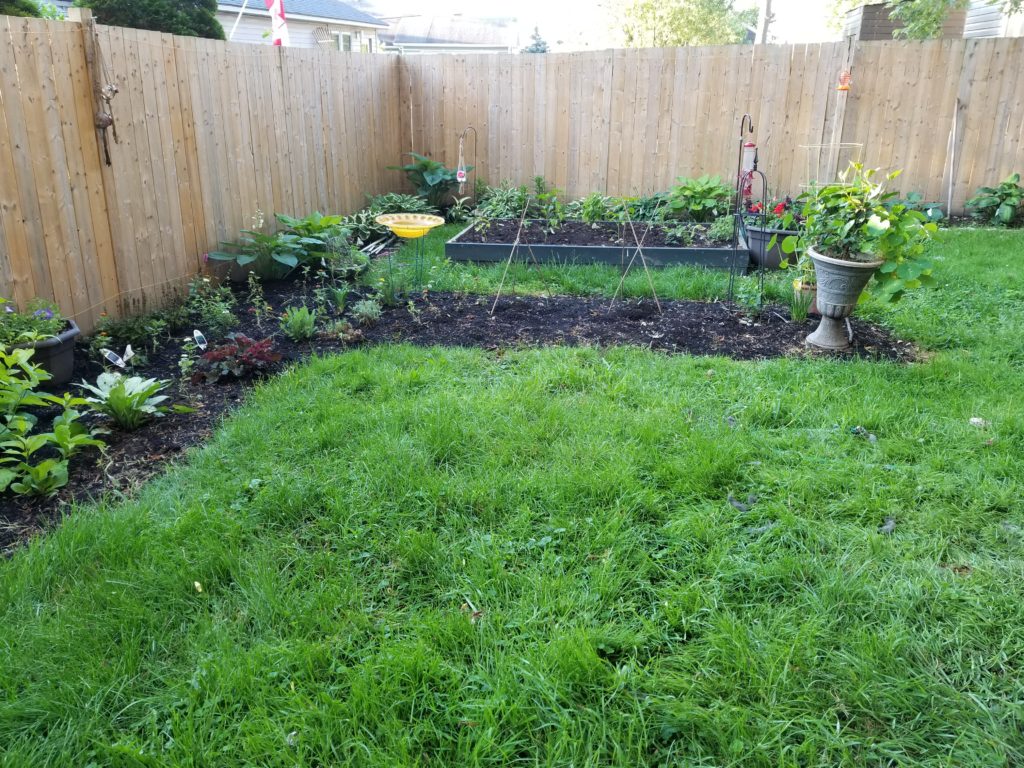
The vegetable garden is planted. Tomatoes, jalapenos and poblanos are in the raised bed. Zucchini is in the ground under the bamboo stakes. The stakes are just so the dogs know not to step on the seedlings. The bird bath is just a glass bowl I found at Value Village plopped on a tomato cage. The birds seem to find it acceptable.
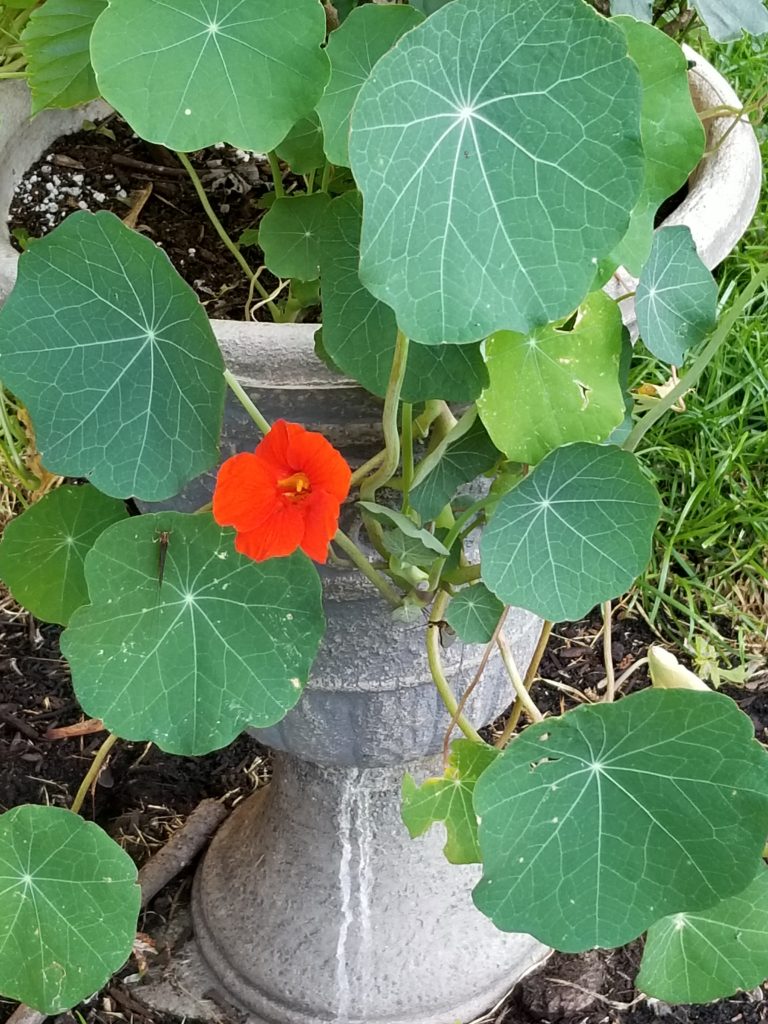
First nasturtium bloom! I dropped a few seeds in with the hibiscus while it was still inside, so they’ve had a head start. Nasturtium with their vivid reds, oranges and yellows are a favorite. These are from the jewel mix.
Other happenings
The weather turned hot and swampy so we put the air conditioners in this week. It’s supposed to be hot and humid for the entire Canada Day weekend.
On Thursday I was all set to change the oil in my car, but my hydraulic jack wasn’t working. After some time on Google and YouTube, I figured out the problem. It’s fixed now, but I’ll share what was wrong in case someone else didn’t know this.
With a hydraulic jack, to let the vehicle down you turn a little valve. So what I didn’t know is it is very important to close that valve once you’ve let the jack down. If it is left open, they hydraulic fluid will leak out and your jack won’t work anymore. I replaced the fluid and finished the oil change on Friday.
I’m also working on rehabbing an old bicycle since mine was stolen from the driveway last fall. It was the first time ever that the Canadian Tire website let me down. I needed a new chain and both locations near me indicated inventory on hand. Neither one had any. I am making progress though – the next hiccup is a badly warped rim, but I’ll figure something out. I’m going for functionally decrepit. I want it to look crappy enough it doesn’t tempt anyone to steal it but work well enough to ride. It’s orange and purple so it will be distinctive!
So that is what I am up to. What are you guys up to this Canada Day weekend for my fellow Canadians and Sunday for everyone else?

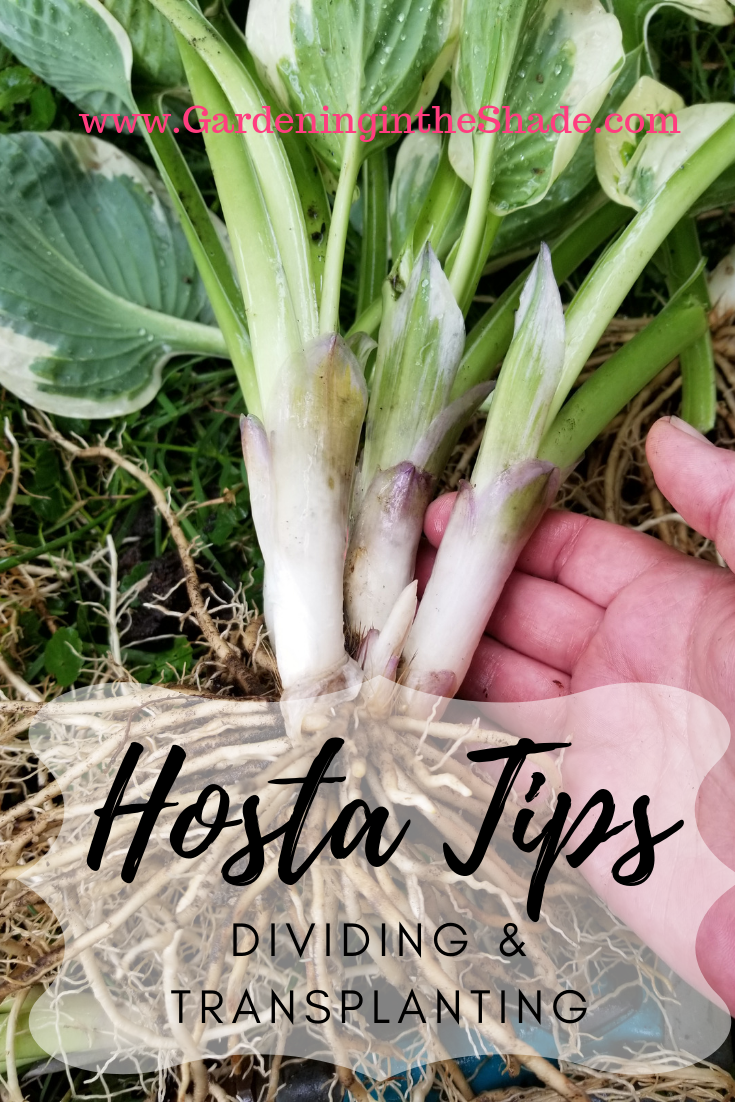
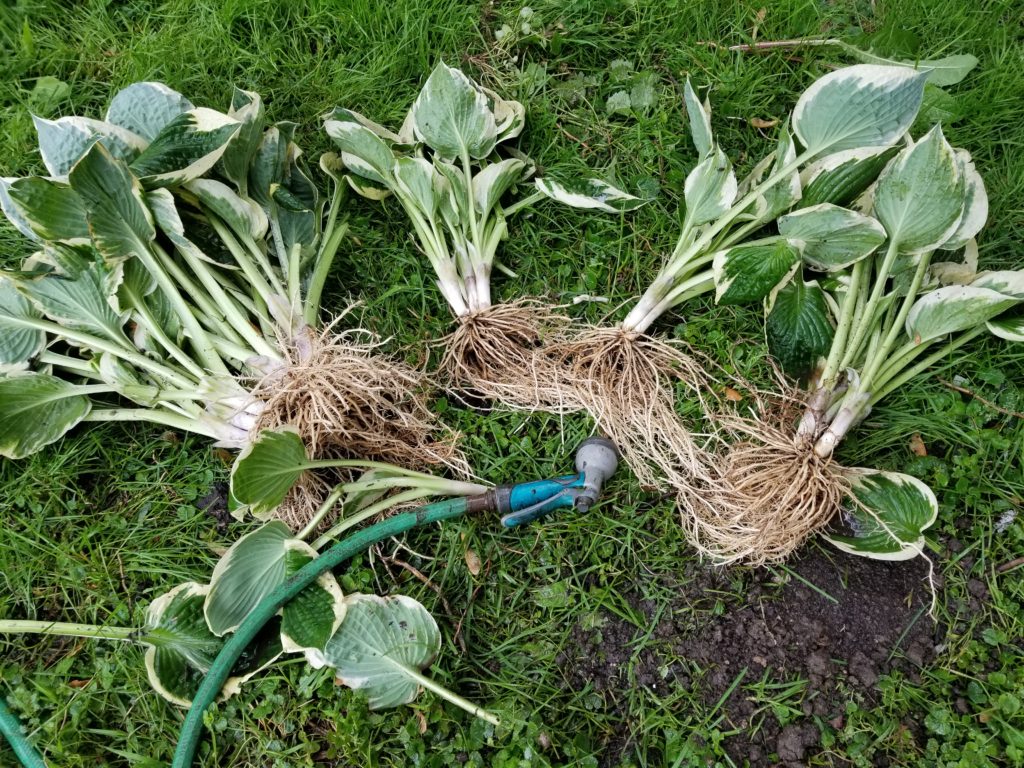 There are a couple of ways to divide hosta, but this is my preferred method. Lift the clump and brush away as much soil as possible. The rinse away all of the remaining soil. With the soil gone, it’s easier to tease apart the roots. I try to have a minimum of 3 eyes per division. Generally if hosta are sold ‘bare root’ they are sold in 2-3 eye divisions so I figure that must be a good number.
There are a couple of ways to divide hosta, but this is my preferred method. Lift the clump and brush away as much soil as possible. The rinse away all of the remaining soil. With the soil gone, it’s easier to tease apart the roots. I try to have a minimum of 3 eyes per division. Generally if hosta are sold ‘bare root’ they are sold in 2-3 eye divisions so I figure that must be a good number.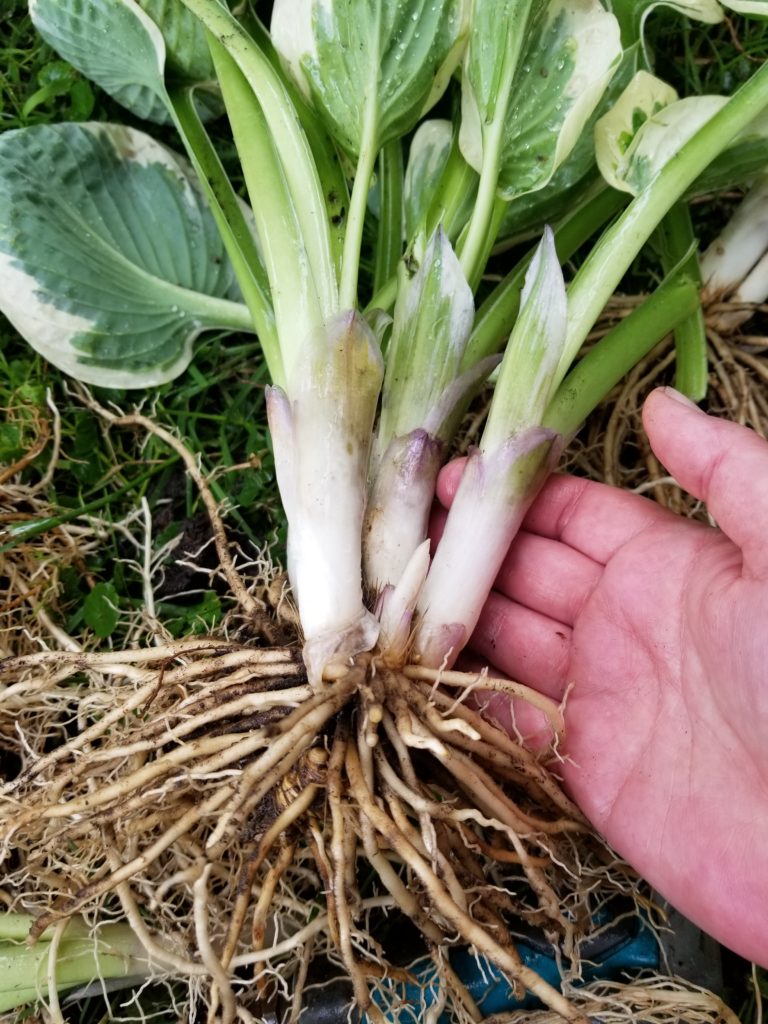
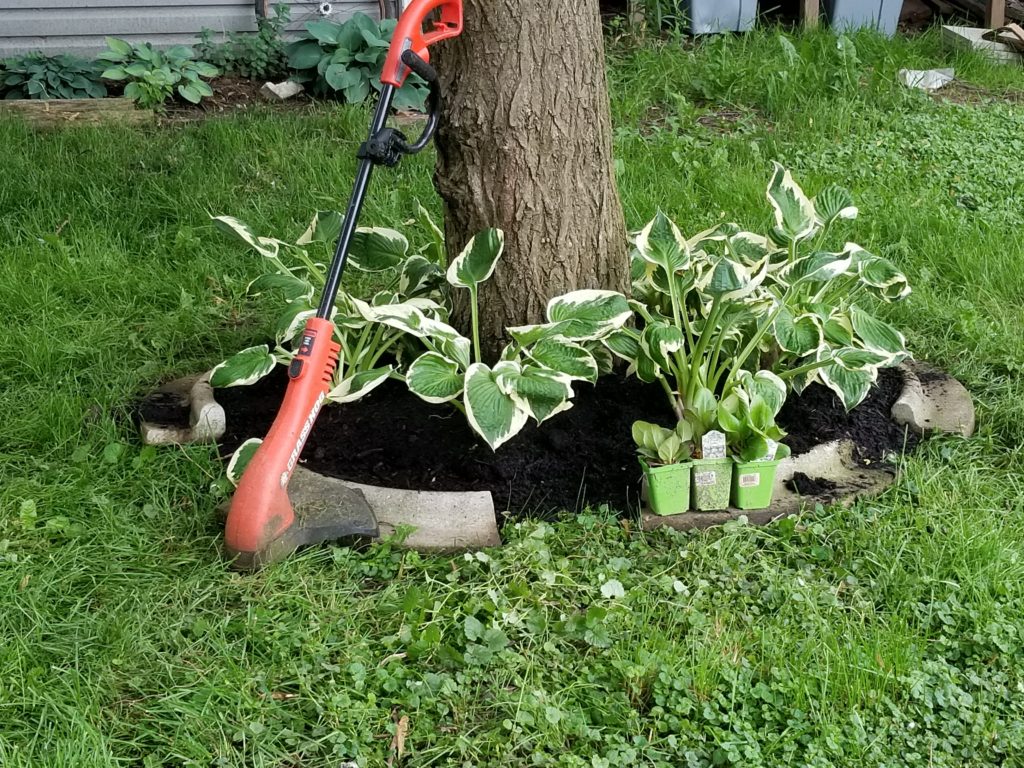
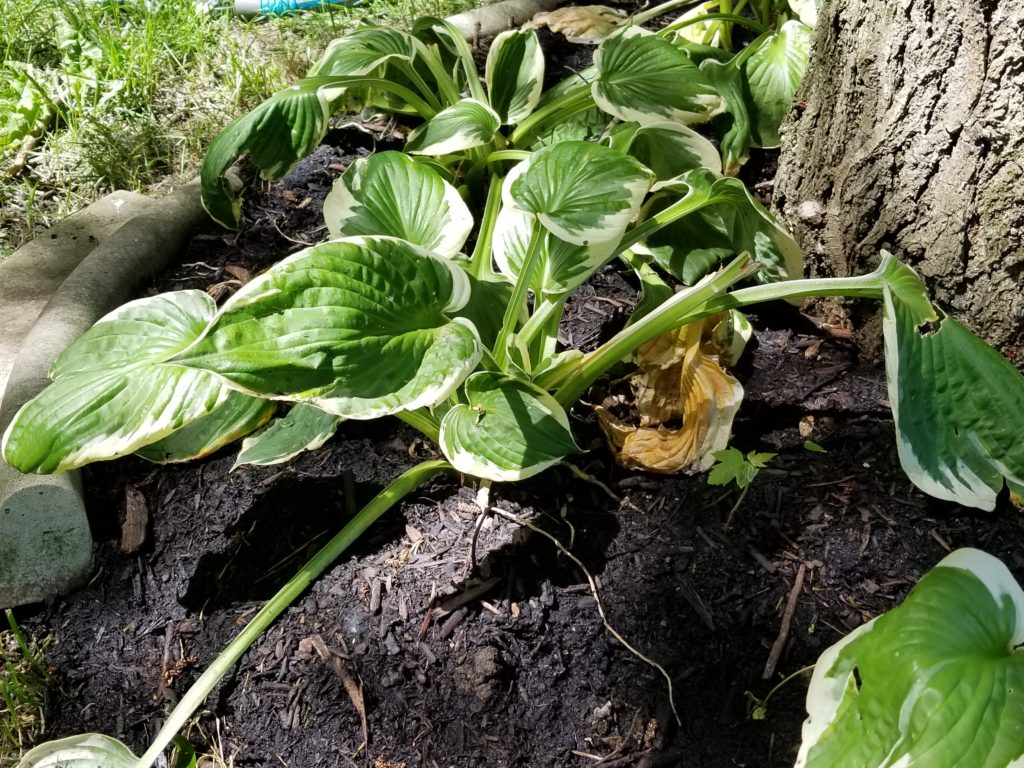
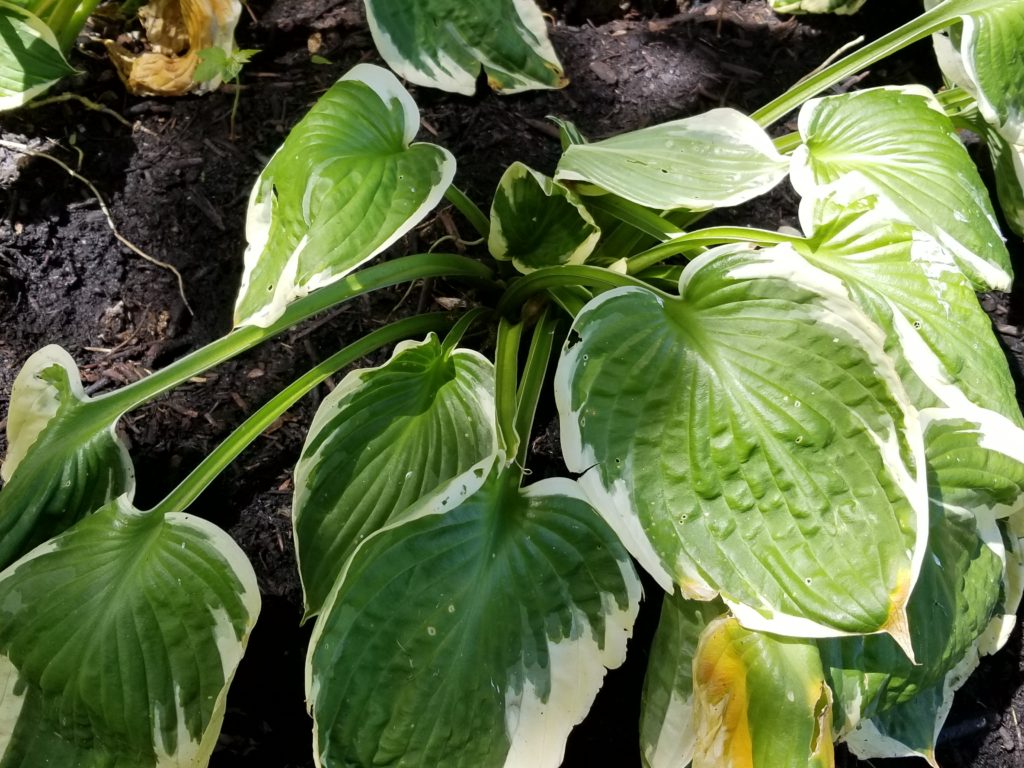
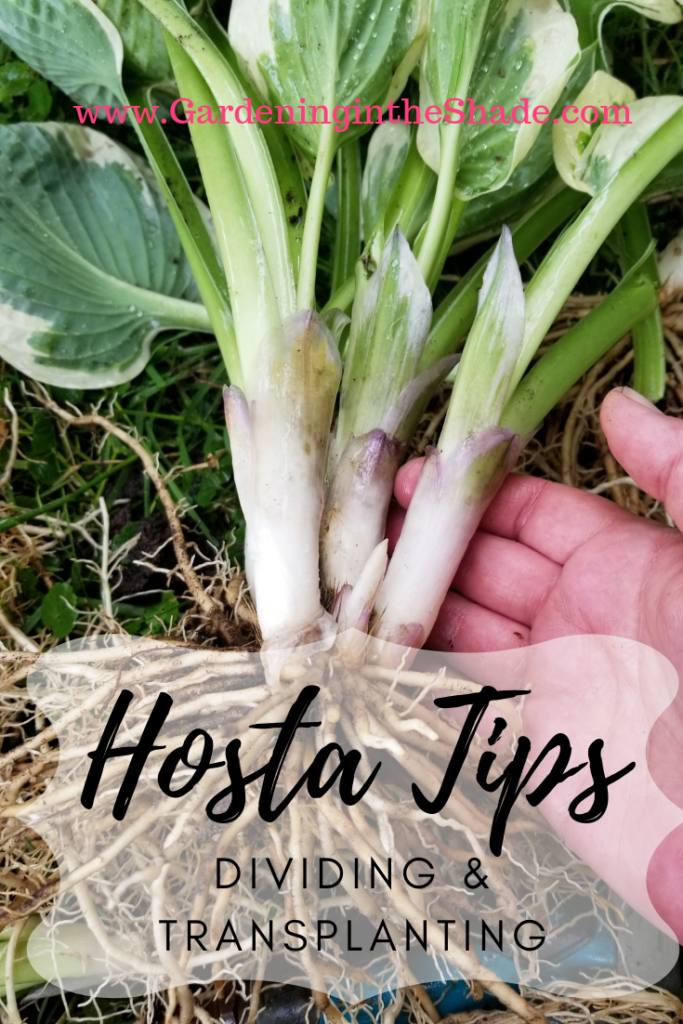 So that’s it! See how easy it is to divide hosta?
So that’s it! See how easy it is to divide hosta?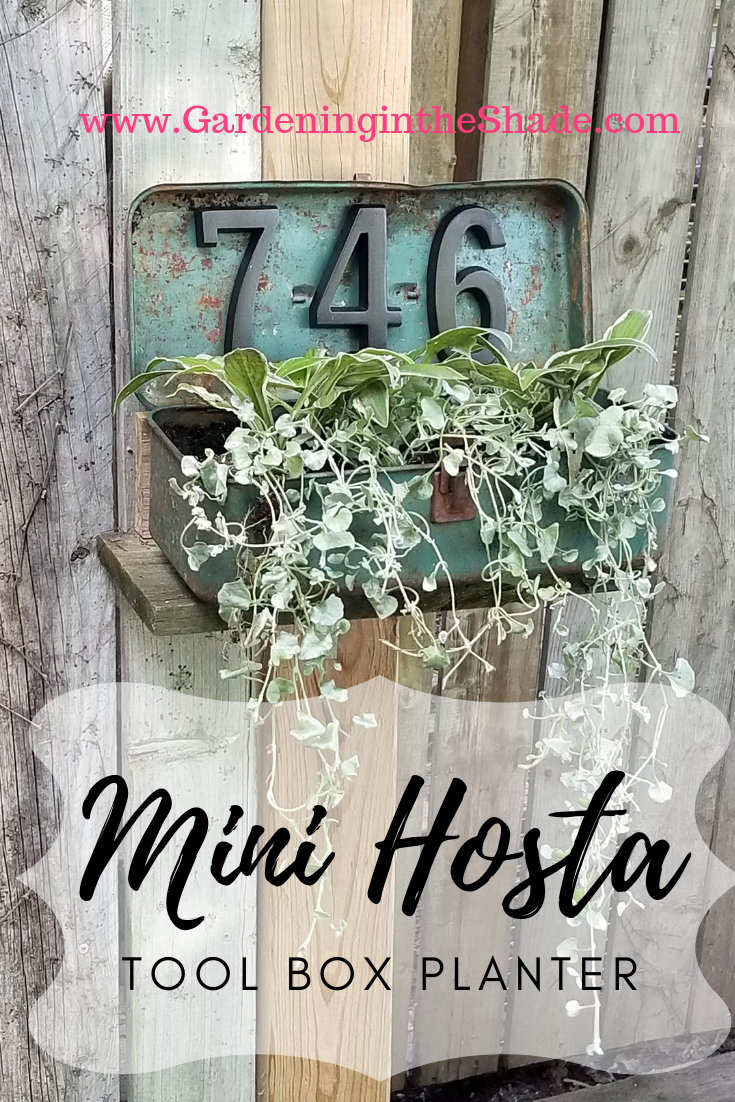
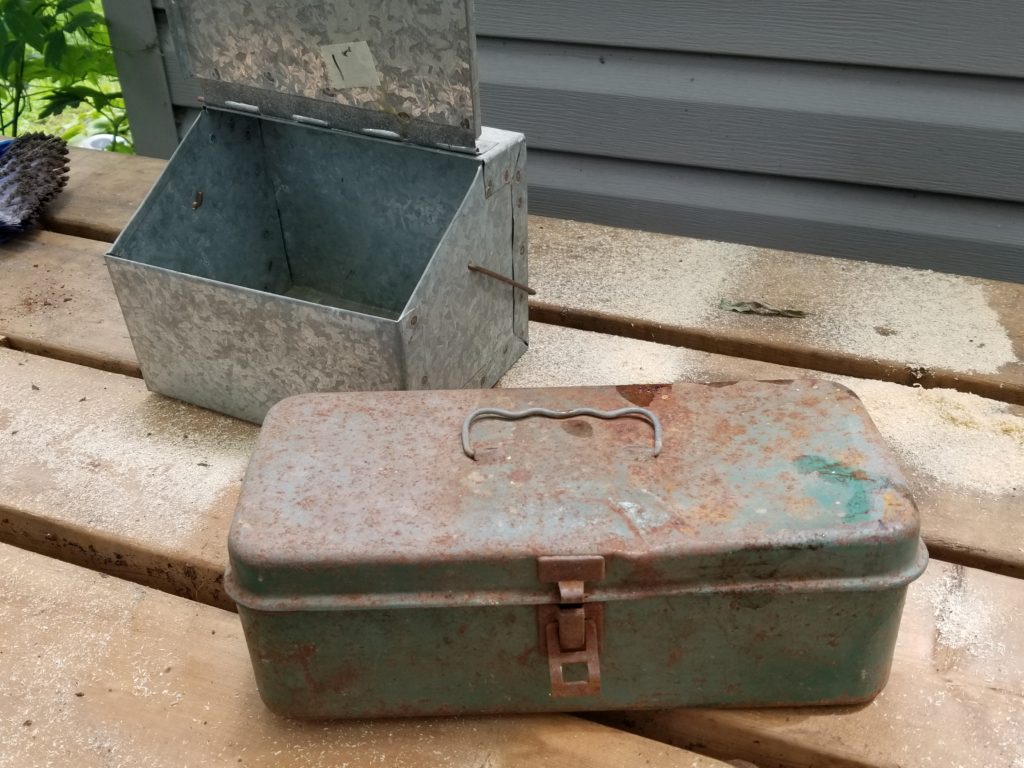 I mentioned a trip to Picker’s Pig Pen in my last post, what I didn’t mention was this fabulous old tool box. It was exactly what I was hoping to find. It has just the right amount of rust and it’s perfectly battered. One of the cutest succulent planters I’ve seen on Pinterest is an assortment of succulents in an old tool box. I needed a tool box so I could reproduce that planter with mini Hosta!
I mentioned a trip to Picker’s Pig Pen in my last post, what I didn’t mention was this fabulous old tool box. It was exactly what I was hoping to find. It has just the right amount of rust and it’s perfectly battered. One of the cutest succulent planters I’ve seen on Pinterest is an assortment of succulents in an old tool box. I needed a tool box so I could reproduce that planter with mini Hosta!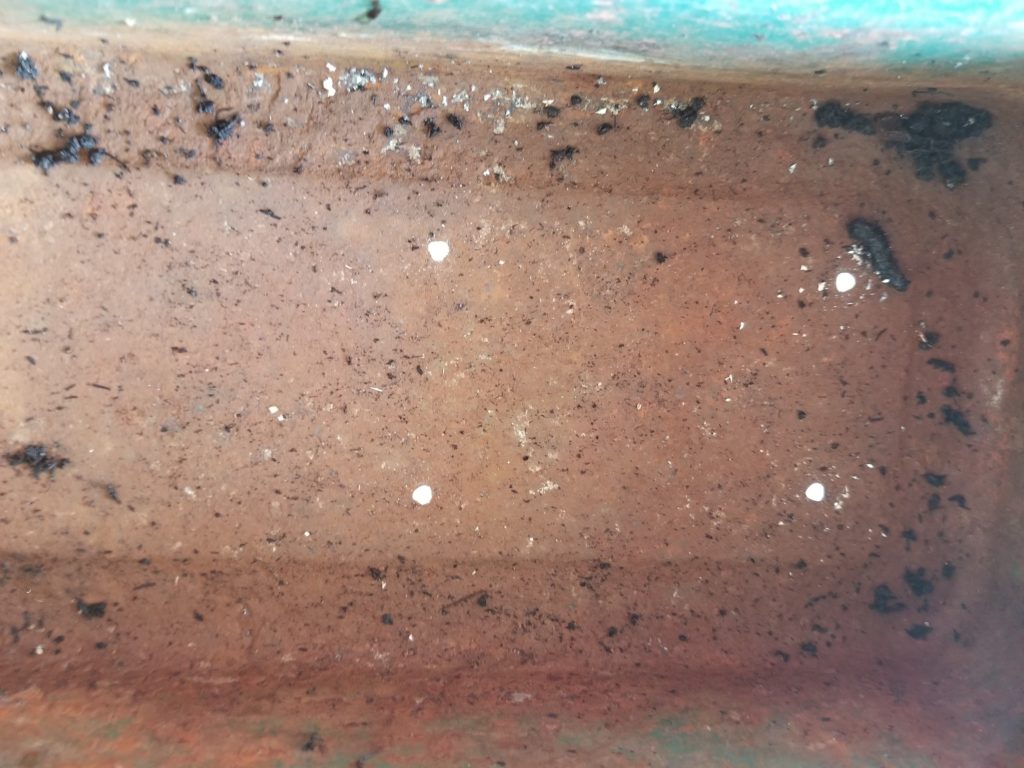 Both metal boxes were cleaned up and I drilled drainage holes in them with a drill bit meant for metal. When you are drilling in metal it helps to have some wood underneath that you don’t mind drilling into. There still might be some burrs, but the holes turn out much neater.
Both metal boxes were cleaned up and I drilled drainage holes in them with a drill bit meant for metal. When you are drilling in metal it helps to have some wood underneath that you don’t mind drilling into. There still might be some burrs, but the holes turn out much neater.